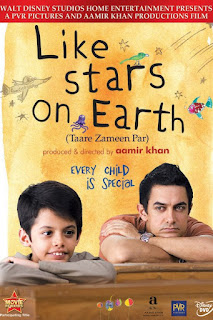CONFERENCE
ON MULTIPLE CHILDHOOD
Our Institute organised a seminar on "multiple
childhood" on 4/11/15 for all the
B.Ed students. All students were spited in the groups of 10 each. There were
around 10 groups. Each group had to prepare a presentation on multiple
childhood including plays and postures.
MULTIPLE
CHILDHOOD :
India has 440 million children. That’s more than the entire
population of North America [ USA, Maxico and Canada put together ]. Every
fifth child in the world is indian. About 27 million children are born each
year in india, But nearly 2 million of them do not live to the age of five due
to malnutrition.The majority of children
are enrolled in school, but up to half don,t attend regularly.many are
pressured to work and earn money for their families.
A group of families, whose members are descendants of successful
individuals (elite members) of one, two, three or more generations ago. These
families are at the top of the social class hierarchy; they are brought up
together, are friends, and are intermarried one with another; and finally, they
maintain a distinctive style of life and a kind of primary group solidarity
which sets them apart from the rest of the population.
- Official
figures indicate that there are over 12 million child workers in India,
but many NGOs reckon the real figure is up to 60 million. The number of
girls involved is not much lower than the boys.
- The
largest numbers work in places like textile factories, dhabas (roadside
restaurants) and hotels, or as domestic workers. Much of the work, such as
in firecracker or matchstick factories, can be hazardous; even if not,
conditions are often appalling and simply rob kids of their childhood.
- By a
law introduced in 2006, no child under 14 should work. But like many laws
in India, the problem is enforcement. 2 years after the ban, the Labour
Ministry had carried out 12,000 operations but only made 211 prosecutions.
Survivor
In Child Abuse :
In 2007 the Indian Government published the results of one of the
world's largest and most sophisticated studies on child abuse, carried out in
conjunction with Unicef and Save the Children. This detailed research on over
12,000 children produced some shocking conclusions:
- Two
thirds of children are victims of physical abuse. The majority are beaten
in school, and over half have to work seven days a week.
- Over
50% have faced some kind of sexual abuse, and over 20% of them severe abuse.
- Half of
children also face emotional abuse.
An orphan is a child whose parents are dead or have abandoned them
permanently. In common usage, only a child who has lost both parents is called
an orphan.Orphaned children of India who have nobody to help them. The
living conditions of the people, especially the poor children on the
streets.
Middle
class children :
Children have become bratty. There was no question of the earlier
middle-class child having a veto on what to eat or what to watch or even what
they ought to do. We obeyed. The converse to this is that perhaps today’s
children might become more independent minded, which is not a bad thing. The
next generation might be better than this one, and that would be a welcome
thing.
Phisically disabled children :
Physically disabled children sometimes feel bad
when they see others doing work with their disabled part of the body. Sometimes
they are Low self-esteem, Low frustration threshold etc. They often get
irritated if somebody is not paying attention towards them.
Children with Learning disability:
The
child who has low learning ability he often feels separated from others. In any
activity he hesitates to take part as he feels that he/she will not be able to
perform well in this activity . Around 10% of the world's populations, 650
million people, live with disabilities. Women and girls with disabilities are
particularly at a risk of abuse. According to a UNICEF survey, 30% of street
youth are disabled.
Deliquent
children :
A delinquent child is a
child of a certain age, who has violated a criminal law or engaged in a
disobedient, indecent or immoral conduct. A delinquent child is usually in need of rehabilitation.











